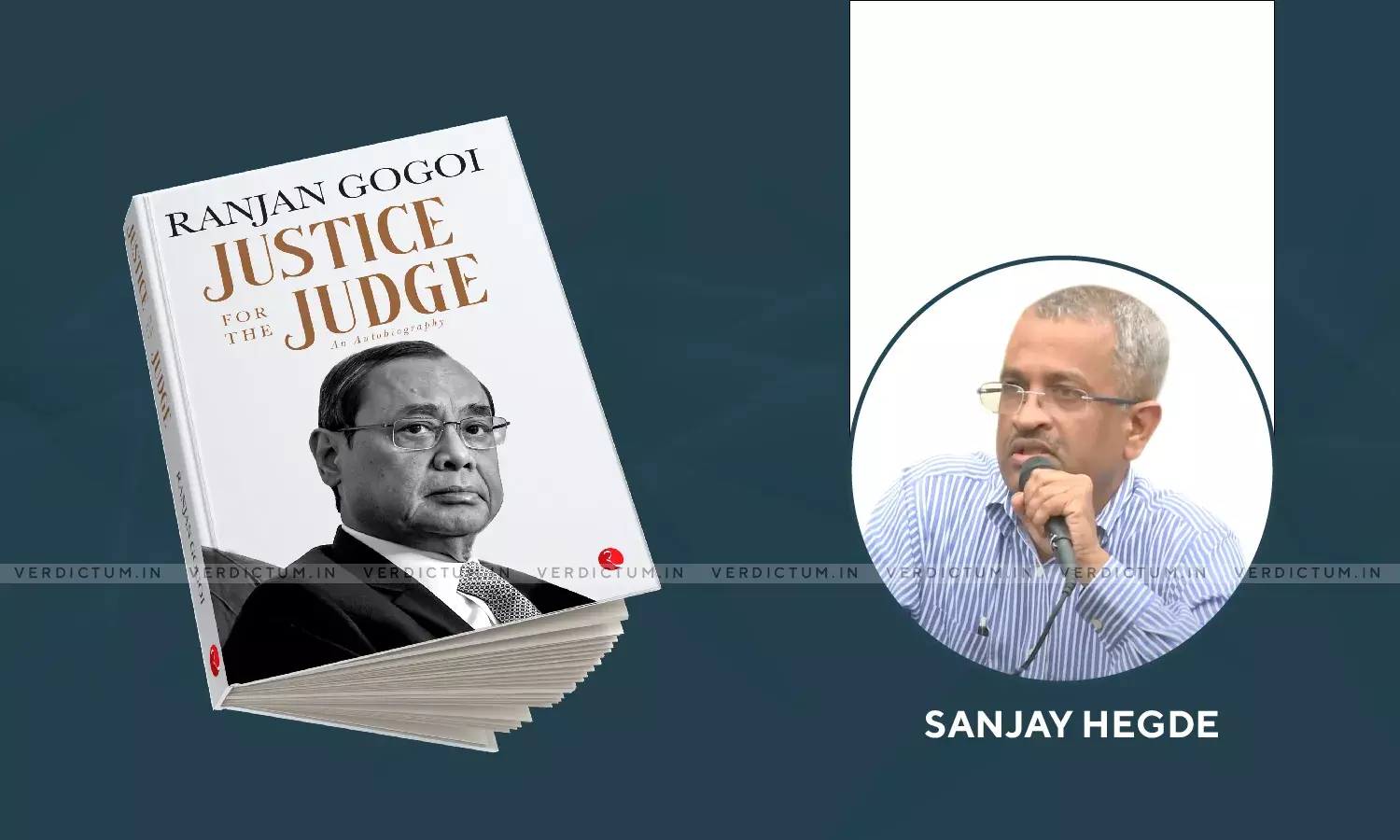Justice For The Judge- Justice Gogoi Writes About 'Double Standards' Of Sanjay Hedge On Sealed Cover Procedure

In his Autobiography, Justice For The Judge, Justice Ranjan Gogoi has dedicated a chapter to the important judgments authored by him.
Among them, while discussing the Rafael case, Justice Gogoi refers to the demand for divulging the cost details of the aircraft, including the price of armaments. Justice Gogoi states that the Court considered such information to be dangerous to the country's security as it would have made even the enemies of the country aware of the armoury that the Rafel aircrafts were expected to carry.
This, according to Justice Gogoi, was the reason why the Bench resorted to the much-discussed sealed cover procedure.
He writes in his Autobiography that he was called "the innovator of the sealed cover procedure", though the procedure was in vogue much before his term.
Justice Gogoi refers to the 2009 contempt case of Prashant Bhushan, where documents were submitted in a sealed cover. He also refers to the 2G and Coal Scam cases where documents were submitted in sealed covers.
The contempt case that Justice Gogoi refers to, relates to the interview that Prashant Bhushan gave to Tehelka magazine in September, 2009 making an allegation that eight of the former CJIs were corrupt. In the suo motu contempt case initiated by the Supreme Court, Shanti Bhushan, a former Law Minister, sought to implead himself to support his son, while providing names of the eight CJIs who were corrupt according to him, in a sealed cover to the Bench headed by Justice Altamas Kabir.
Justice Gogoi then refers to the filing of a report in a sealed cover by Senior Advocate Sanjay Hegde in the Shaheen Bagh case before the Supreme Court.
"In fact, in the Shaheen Bagh case, Sanjay Hegde, one of the critics of the sealed cover procedure, had himself submitted a report to the Court in a sealed cover. Is it not a case of double standards?", Justice Gogoi asks in his book.
Sanjay Hegde along with Advocate Sadhana Ramachandran were appointed as interlocutors by the Supreme Court to hold talks with the anti-CAA protesters at Shaheen Bagh in February, 2020. The interlocutors had submitted their report before a Bench comprising of Justice SK Kaul and Justice KM Joseph in a sealed cover.
When the Petitioners in the batch of cases, who had approached the Supreme Court seeking removal of road blockage by the protesters, demanded a copy of the report, the Bench had refused to share the sealed-cover report with the Petitioners or the Central or Delhi governments.
Sanjay Hegde has been a critique of the sealed cover procedure. In the context of the bail hearing of P. Chidambaram before the Supreme Court, when the Enforcement Directorate had submitted documents in a sealed cover to the Court, Sanjay Hegde had said that a number of high profile cases have seen submissions being made through sealed cover and that as a matter of judicial policy, it should be discouraged.
Incidentally, though Justice Gogoi does not refer to this in the book, the sealed cover transaction was resorted to even in the 2002 Gujrat Riot Case. The Special Investigative Team, which probed the alleged involvement of those in power in the riots, had submitted its reports in sealed covers to the Supreme Court.
One such report was in relation to the alleged involvement of activist Teesta Setalvad and her NGO in tutoring witnesses and exaggerating violence against a particular community. When the report was published in media, Indira Jaising had argued before the Court that making the report public had defamed Teesta and her NGO. A per an article published in the Time of India, Indira Jaising had sought initiation of contempt proceedings against media for reporting contents of the report submitted in sealed cover, which the Court refused to do.

